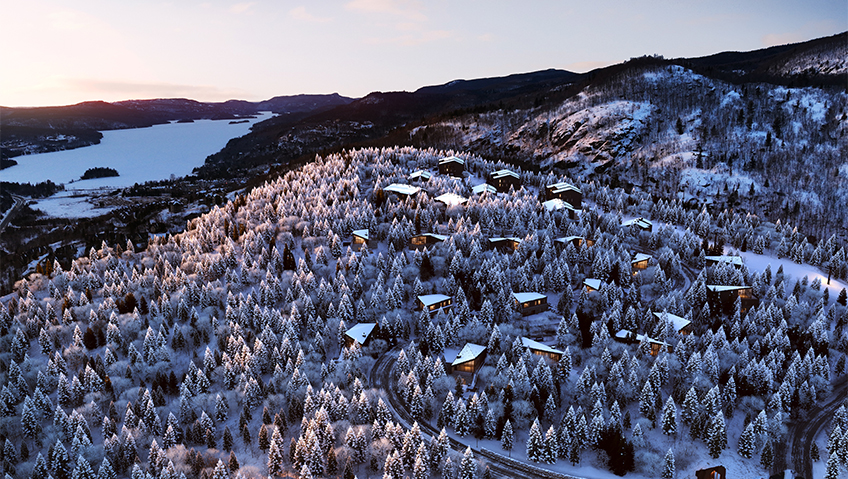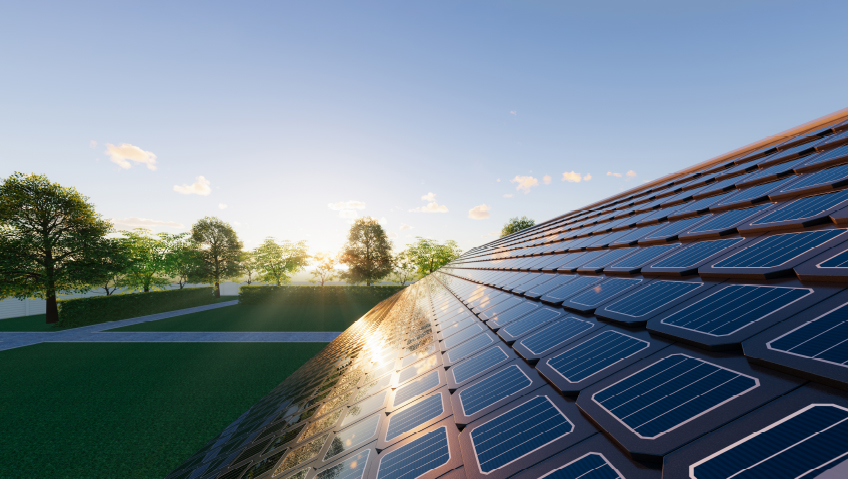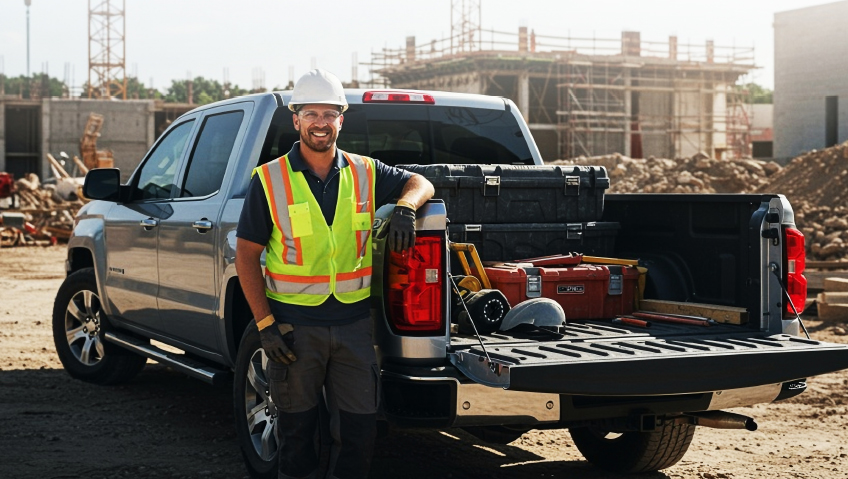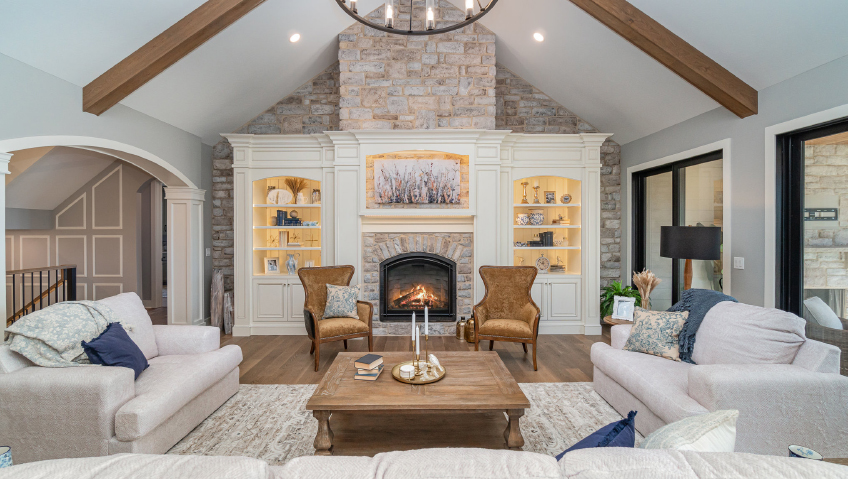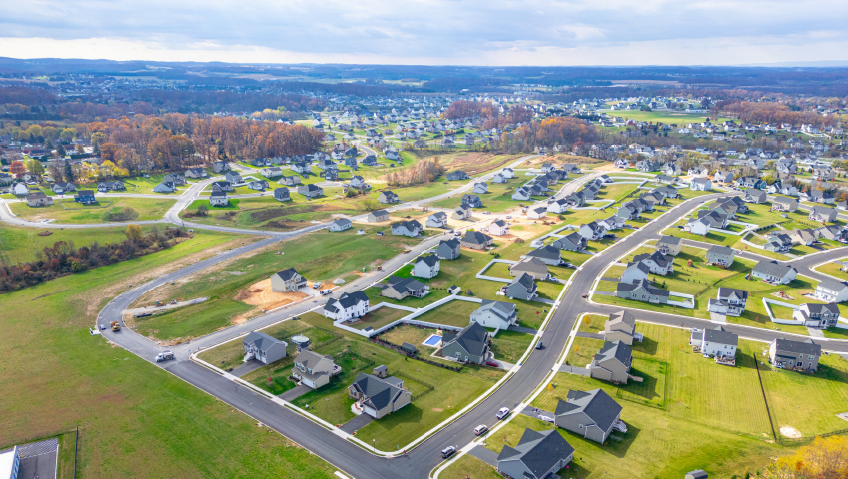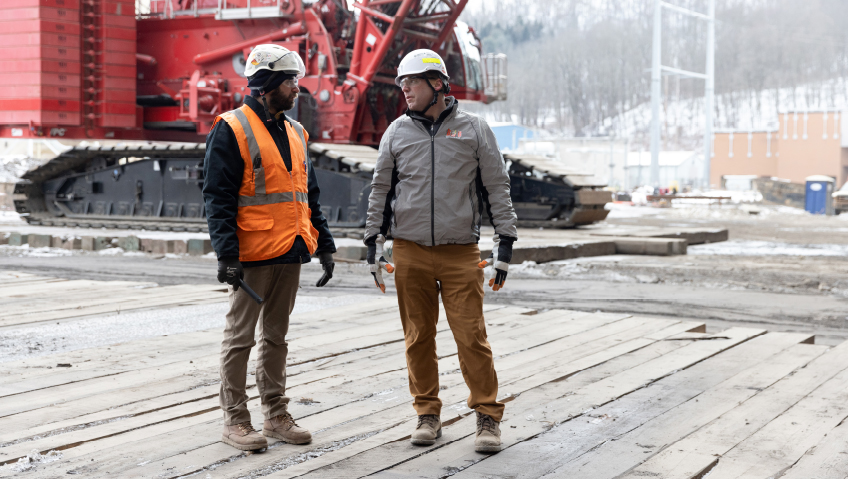The world as we knew it—even just a couple of years ago—appears to be changing faster than we can blink. Visionary to its very core, Kodem, based in Montréal, Quebec, has been leading transformation in the local property development industry since 1997. Known for a quintessentially rational yet unapologetically creative approach to design and development, founder Benjamin Sternthal believes that developers, decision-makers, and their proxies must collaborate to safeguard the future of healthy and thriving communities across North America.
While geopolitical conflicts are something most people in the developed world do their best to avoid, reality hit home for Kodem in recent years when the company was called upon to rethink how to achieve embassy-level security through design—while protecting the right to liberty of the occupants of its buildings. “We’re designing in a world out of orbit,” says Sternthal. “It’s a threat to the development industry. You can’t develop effectively when stuff is upside down.”
These sobering events sparked deep reflection—on society’s current mental state, how we got here, and how design can be leveraged to enable social cohesion rather than corrode it. “Things are a bit extreme and out of whack when you start getting into designing schoolyards with bulletproof fences,” Sternthal says, reflecting on a project that followed three attacks on a Toronto school last year.
Reminding readers that North America was built by developers, Sternthal quotes the Dire Straits song, Telegraph Road:
“A long time ago came a man on a track
Walking thirty miles with a sack on his back
And he put down his load where he thought it was the best
He made a home in the wilderness…”
“This was development on the frontier,” says Sternthal. “Developers transformed North America into what it is today with all its components.” Noting what bad politicians—but great storytellers—developers make, Sternthal is open about his industry’s undeniable impact on the structure of the urban landscape and its imperative role in its improvement.
He draws inspiration from one of his favorite books, Ayn Rand’s The Fountainhead, which puts forth that, “Throughout the centuries, there were men who took first steps down new roads armed with nothing but their own vision. Their goals differed, but they all had this in common: that the step was first, the road new, the vision unborrowed, and the response they received—hatred. The great creators—the thinkers, the artists, the scientists, the inventors—stood alone against the men of their time. Every great new thought was opposed. Every great new invention was denounced… But the men of unborrowed vision went ahead. They fought, they suffered, and they paid. But they won.”
In multicultural societies, the mandate in a healthy, functional system is, ideally, to create spaces that contribute to the global good of the communities in which they exist—and their economies, either directly or indirectly. But this is not always a simple process. In real-world scenarios, the psychology that drives social violence is often more complex and difficult to quell than textbooks would have us believe.
French philosopher of social science René Girard offers some insight into the dynamic with his famous mimetic theory. According to this theory, a subject copies—or attempts to copy—a model exhibiting an object, in what he calls mimetic desire. Such coveting is believed to be driven by the natural human need for belonging, acceptance, a sense of power, control, or to be regarded as of equal standing or status as the model—rather than genuine proclivity. Typically, when desired resources are limited, conflict follows the competition that stems from such triangulation. That dynamic can, on a social level, turn violent. The function of such resulting violence is to seek relief from the sense of frustration a subject, individually or in a group, suffering mimetic desire experiences.
Throughout history, and more recently, humans have commonly come to know this reaction to social or economic contention as warfare in its many forms. And, while many wars are fought in foreign lands, related conflicts play out on our streets and in our neighbourhoods. It is at this point that abstract philosophies and theories come home to roost, challenging us to climb down from our ivory towers to engage with the human on the other side of the fence.
“How do we translate abstraction into real solutions?” Sternthal asks. Perhaps by looking at history, where we learn that peace cannot be attained by mere talk, but only through truthful action; that wisdom is of no use if not implemented practically; and that there is nothing more noble than unity achieved through self-awareness.
The question then, is how do we cultivate unity in diversity in societies where psychological apartheid is driven by subjects and models who reciprocally exclude, sometimes demonize, and often dehumanize one another? And how do we design communities to support the process of cultivating unity rather than replicating defensive architecture that only deepens social fractures?
“Peace is formed on mutually beneficial agreements. Countries work together because it benefits both countries; they stop working together when it stops benefiting both countries,” Sternthal says, underlining that the same is true for people. As a result, he posits, peaceful co-existence is a learned rather than an innate skill for humans.
“As developers, we study human behavior, trying to understand it in its pure form. We try to create spaces that humans enjoy being in.” For Sternthal, the goal of creating such spaces is to shape a world where people experience positivity. “War is not a positive experience. Fighting is not a positive experience,” he says. “A positive experience is going to a café and having a great conversation with someone. Whether you agree or disagree, you can have a stimulating, interesting conversation.”
That is the crux of effective design at Kodem: space-making that intelligently shapes cradles for human connection and social evolution, where communities can evolve to reach their highest potential. “We turn urban spaces into meaningful places,” he continues. This is by no means just another marketing quip.
Kodem’s tools to achieve such a noble goal are sometimes surprising. From art to volume, intentional traffic flow, seating arrangements, and inviting atmospheres, myriad methods are employed to invite interaction among end users. “In this way, we are able to change people’s lives… Providing spaces where we can guide that human weakness into a better zone of humanity. I really love doing this,” Sternthal tells us.
He points out that creating spaces as huge, protective bubbles is unsustainable. Referring to the popular Disney show Descendants, he compares some modern construction to establishing the utopian kingdom of Auradon, where “the others”—the anti-heroes—end up being villainized and cast onto the Isle of the Lost, all while the two groups descend into eternal archrivalry.
Within this context, the passionate developer compares solving real-life, systemic social ills to protecting humans from darkness. “The only way to destroy evil is by changing evil’s way—not through defenses,” he says.
He suggests that we live in a world where darkness often eclipses light—where humans must learn to be and, ultimately, remember how to remain, light, especially when times become difficult and very little makes sense. “Might has become right,” says Sternthal. “The law of the jungle has taken over society. People [don’t seem] to be questioning this.”
Developing with purpose, he believes, means making spaces that foster the forces of light, in the context of Paulo Coelho’s Manual of the Warrior of Light. “It’s time for those on the sidelines to make a decision. What side do you want to be on? Where do you want to go?”
Which brings him back to asking: how do you develop in such an environment when you don’t want to build infrastructure that ultimately leads to poverty and destruction? Underscoring his belief that most businesspeople make terrible political leaders due to a lack of skills, he does believe in the business sector being run by incredible problem solvers, doers, and advisors.
Despite their typical lack of political prowess, Sternthal is firm in his belief that these businesspeople have an important part to play in changing the world. “Our role is on the ground level,” he says, “changing urban spaces posing potential conflict risks into meaningful places where people can sit and talk and get along. That’s our role.”
At Kodem, building modern cities and institutions where people from all walks of life can create healthy, thriving societies is the only meaningful, genuinely sustainable way forward. “Darkness is one dimensional,” Sternthal asserts. “Light is every color of the rainbow.”
The company has many projects under its belt that model these values. Its iconic buildings create opportunities for people to interact, whether in libraries, gyms, swimming pools, cafés, or gardens. One of its flagship projects, Hemisphere in Pointe-Claire, is a 330-unit rental development and another sterling example of this ethos. Here, two towers are connected by a bridge that houses all their amenities. “I look at the amenities as a crossroads of civilization. It’s where old and young meet and interact in a beautiful space.”
Hampstead Park, a project completed in 2000, is a space where children of all ages can gather to do what children do best: have fun. Another signature development is Solstice Montréal, where the owners’ lounge leads onto a wine cellar, allowing people to connect. Its exercise facilities also have an intentionally open design, creating a visual flow that stimulates participation and interaction between people. And these are just a handful of the many beautiful examples of Kodem’s well-considered, connection-driven design.
The Kodem formula for achieving such effective design is deceptively simple: be clear on the desired outcomes. Here, that desired outcome is always to weave magic and logic in perfect synergy. Therefore, Sternthal’s art of design is vested in creating a dialogue between streetscapes and living spaces—timeless, effective designs that seamlessly blend into the legacies and histories of those who call them home in ways that will render these buildings relevant generations from now. “As developers, we need to paint a story to society of what a better way of living is. And then create the physical forms and spaces to live that way.”
As a patron of the arts, Kodem proudly features exquisite, often custom works by local artists in its buildings, not only enhancing aesthetic value but adding permanence to its projects. By creating such beauty, people’s sense of well-being is instantly elevated, welcoming light into the human experience. The point? Considering the resources available to humans today, Sternthal sees no reason why humanity should regress to living in caves, either psychologically or physically, ever again.
Considering the influence of real estate development on every aspect of urban life as we know it, Sternthal is clear about its power to transform and correct the direction society is heading in. Quoting the film Raya and the Last Dragon, he reminds us that coming together to build is a choice, love is a bridge, and trust is a gift.
“There’s energy in the human connection. Magic is collaboration and a legacy in creating spaces that unite rather than divide. Disney got it right,” he says. “That’s how developers can help society. That’s what we should be doing now more than ever. That’s the language we should be talking.”

